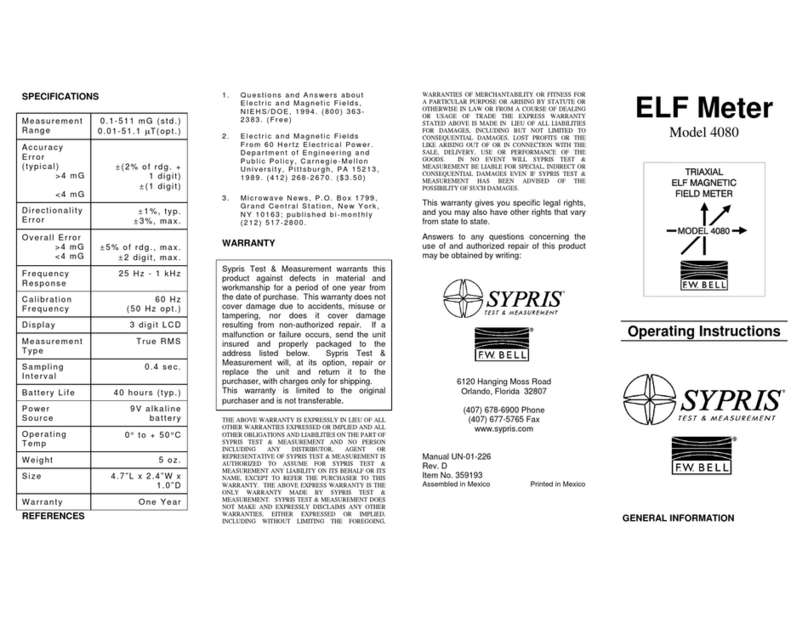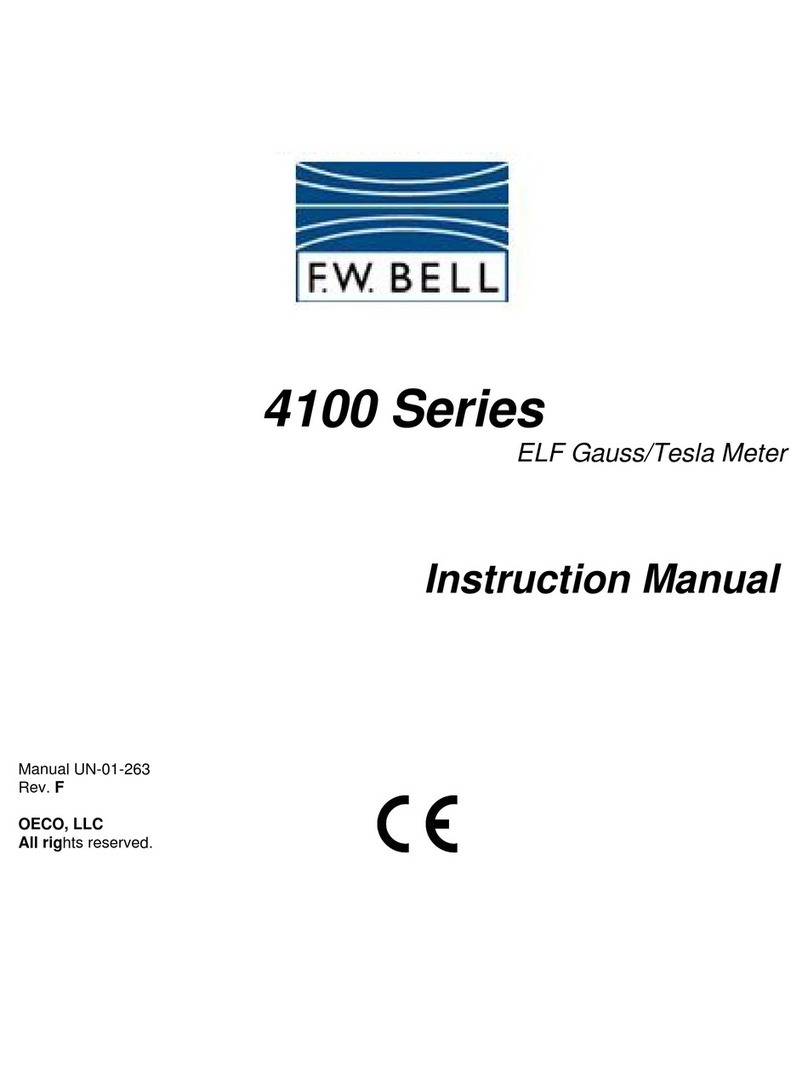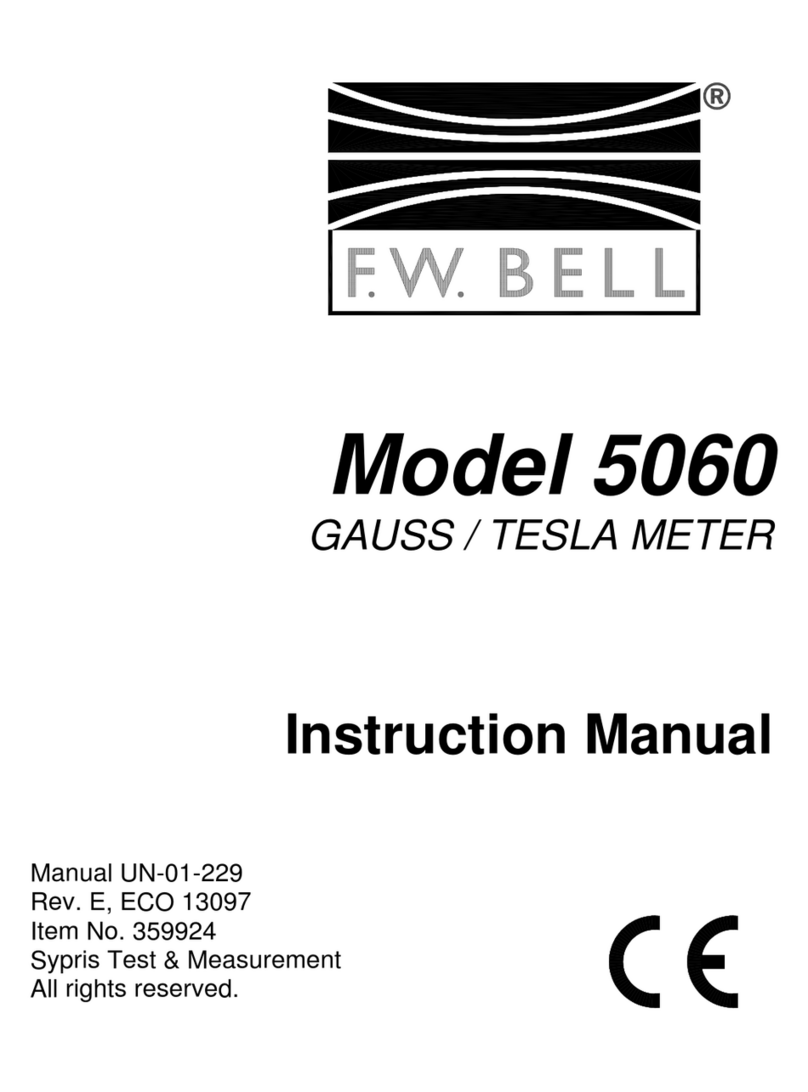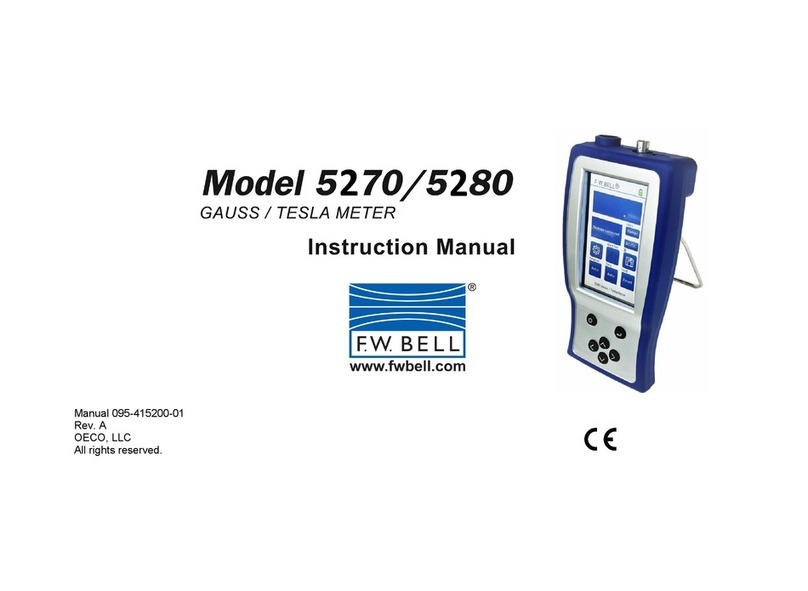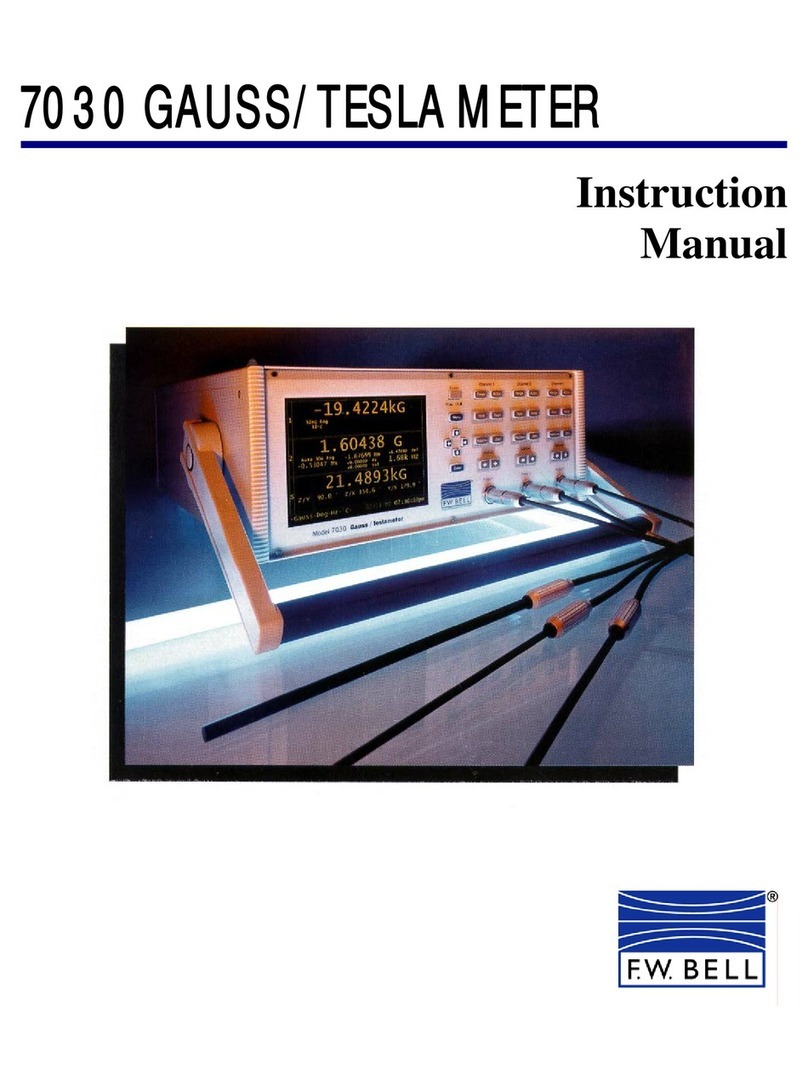
F.W. BELL 8000 Series Gauss/Tesla Meter Instruction Manual
ii
SECTION 6 Flux Density Measurement....................................................................6-1
Overview................................................................................................................... 6-1
Measurement Units................................................................................................... 6-2
Flux Density Reading................................................................................................ 6-3
Measurement Range Selection ................................................................................6-3
Measurement Mode Selections ................................................................................6-4
DC Mode Operation .............................................................................................. 6-5
AC Mode Operation ..............................................................................................6-5
Zeroing .....................................................................................................................6-8
Display Update Interval........................................................................................... 6-12
Hold Function .........................................................................................................6-13
Relative Mode......................................................................................................... 6-15
Vector Summation .................................................................................................. 6-18
Analog Outputs.......................................................................................................6-21
Classifier Outputs ................................................................................................... 6-24
Sources of Measurement Error............................................................................... 6-25
SECTION 7 AC Waveform Display............................................................................7-1
Introduction............................................................................................................... 7-1
AC Waveform Display Graphical Layout...................................................................7-1
Accessing the AC Waveform Display .......................................................................7-2
Setting the Time Base ..............................................................................................7-2
Setting the Vertical Scale..........................................................................................7-3
Trigger Operation...................................................................................................... 7-4
Trigger Channel Selection.....................................................................................7-5
Trigger Modes.......................................................................................................7-5
Free Run ........................................................................................................... 7-5
Auto ...................................................................................................................7-5
Repeat...............................................................................................................7-5
Single ................................................................................................................7-5
Trigger Slope.........................................................................................................7-6
Trigger Level .........................................................................................................7-6
SECTION 8 Remote Operation ..................................................................................8-1
Introduction............................................................................................................... 8-1
Communications Ports..............................................................................................8-2
RS-232 Port .......................................................................................................... 8-2
Functional Description ....................................................................................... 8-2
Configuration ..................................................................................................... 8-3
Ethernet Port.........................................................................................................8-4
Functional Description ....................................................................................... 8-4
Configuration ..................................................................................................... 8-5
Accessing the System with TELENET Client.....................................................8-6
Internal Web Application .......................................................................................8-7
Accessing the Internal Web Application ............................................................ 8-7
Functional Description ....................................................................................... 8-8
IEEE-488 (GPIB) BUS ........................................................................................ 8-10












